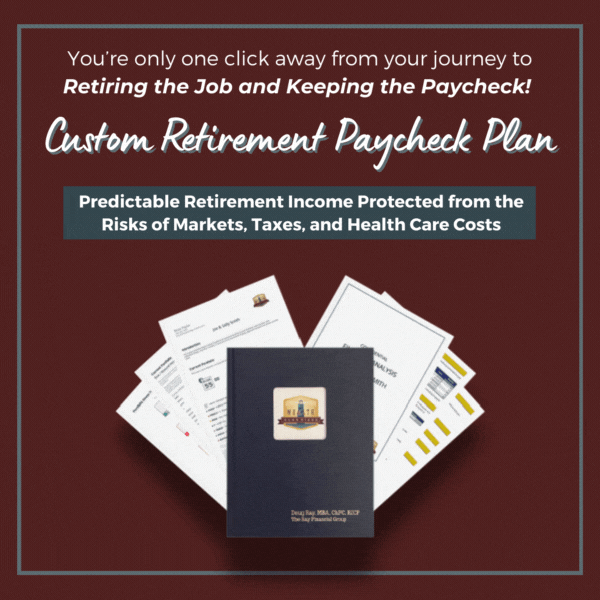 One variable that is hard to plan for in retirement is taxes. We don’t even know what the tax rates will be next year, so how can you plan for 20 years or more in the future? We can’t say whether rates will be higher or lower, or if tax-preferred investments will change. But not knowing doesn’t mean that you shouldn’t be planning.
One variable that is hard to plan for in retirement is taxes. We don’t even know what the tax rates will be next year, so how can you plan for 20 years or more in the future? We can’t say whether rates will be higher or lower, or if tax-preferred investments will change. But not knowing doesn’t mean that you shouldn’t be planning.
Gather the Data
Gather all your investment and bank statements, and then calculate your net worth statement. In other words, figure out what you own and what you owe. Then divide your investments into two categories: taxable, such as brokerage accounts, and tax-deferred, like individual retirement accounts (IRAs), 401(k) and 403(b) plans and annuities.
Within the taxable accounts, list what you own that may have special tax treatment. Example: tax-free bonds. Within the tax-deferred category, look at your statements to see if you have any after-tax money that you contributed. In a company retirement plan, you will probably roll over the assets to an IRA when you retire. The after-tax contributions (not the growth) can be taken out and not rolled over.
Make A List of Different Types of Accounts
If you have different types of IRAs, make a list of what they are. For example, you may have deductible IRA contributions, non-deductible contributions, and Roth IRAs. With Roth IRAs, you can withdraw these dollars tax-free in retirement.
It gets tricky with non-deductible IRAs. When you withdraw from these accounts, the contributions are tax-free, but the growth is taxable. It would be easy if you could take the contributions out first, but the laws don’t allow this. For every dollar you withdraw, some will be considered basis and some growth. The basis portion will be free while the growth will be taxable. What makes this even more confusing is that, if you have various IRAs including a rollover from a company plan, you need to look at all accounts when you calculate the tax-free percentage.
Your non-deductible contributions should be listed on IRS Form 8606. If you never filed this form and made non-deductible contributions, the IRS assumes all the money in the IRA is tax-deferred and therefore taxable upon distribution.
Speak with an advisor or tax preparer immediately to correct this.
Inherited IRAs
For IRAs inherited from original owners who have passed away on or after January 1, 2020, non-spousal beneficiaries are required to withdraw all assets from an inherited IRA or 401(k) plan within 10 years following the death of the account holder. The SECURE Act requires beneficiaries to withdraw all assets from an inherited IRA or 401(k) plan by December 31 of the 10th year following the IRA owner’s death.
Exceptions to the 10-year rule include payments made to an eligible designated beneficiary (a surviving spouse, a minor child of the account owner, a disabled or chronically ill beneficiary, and a beneficiary who is not more than 10 years younger than the original IRA owner or 401(k) participant). These beneficiaries can “stretch” payments over their life expectancy. Discuss the potential tax implications and distribution options of this accelerated withdrawal schedule with your tax advisor.
Define Your Retirement Goals
Now that you collected and organized your information, make a list of your retirement goals in measurable terms. Take into account when you will retire, how much you will need and where you want to live. Will you sell your house? Even if you are many years from retirement, start the thought process now.
Each year, revisit your goals and make adjustments as needed.
How Do Taxes Fit In?
Retirees often find that they have more income than they thought they would, especially when turning 72. That’s the magic age that Required Minimum Distributions (RMDs) kick in. Even when you aren’t working, you have income to pay taxes on. A slight change in tax rates can have a large impact on your finances, especially when compounded over many retirement years.
You should plan based on current tax laws. Whether rates go up or down, chances are your tax-deferred money will still be taxable, and capital gains and qualified dividends will still have preferential treatment. Over the next two decades, tax rates likely will rise in some years and fall in others.
When planning, build in a higher tax rate to some of your assumptions. See how that impacts your planning. It’s better to be safe than sorry. For instance, when deciding where to live, even if you plan to live in a state with no income tax, consider including some state tax in your projections.
States that currently have no income tax might institute one in coming years. If this doesn’t happen, then you have extra savings to enjoy. You want your retirement years to be a stress-free as possible, so invest a little time now to plan for the future. If all of this is overwhelming, the Wealth Guardians are here to help make sense of it all. We have software that can read your tax return and identify specific areas where you may be missing opportunities for tax savings.
Our Custom Retirement Paycheck Plan shows how to protect your retirement from the risks of unexpected market swings, tax changes, and health care expenses using a mathematically tested strategy to create lifetime income allowing you to stop worrying about outliving your money and get on with enjoying the rest of your life.
Let us show you in black and white a custom retirement income plan that is comprehensive, individualized and based on strategies that balance growth with downside protection. Get your Custom Retirement Paycheck Plan now!
Give us a call at our Charlotte office at (704) 248-8549, or our Clemmons office at (336) 391-3409. Or, click here to request a no-cost, no-obligation meeting.
[SOURCES & ADDITIONAL DISCLOSURES]
Copyright © 2022 FMeX. All rights reserved. Distributed by Financial Media Exchange.







